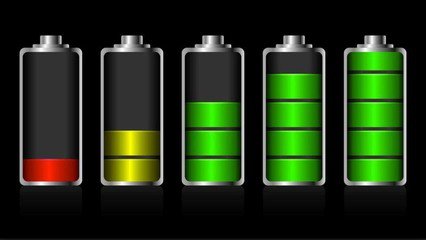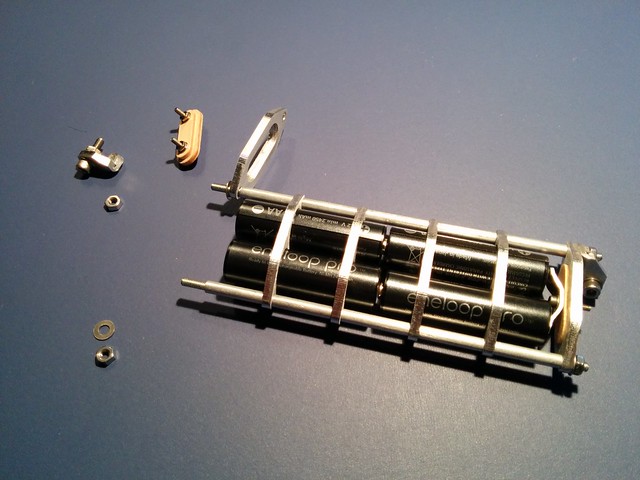Lithium Iron Phosphate Rechargeable Battery-Charging and Safety
Feb 26, 2020 Pageview:1538
Lithium iron phosphate batteries are a type of rechargeable batteries that use LiFePO4 as the cathode, and a graphitic carbon Material as the electrode with the metal backing acting is the anode. These batteries have been around since the late 1990s after discovering the many advantages like durability and low production costs that this battery technology brings to tech. These batteries can last up to 10 years, and their average lifetime charge cycle is about 2000 charge cycles. The average voltage for each cell in a lithium iron phosphate battery is 3.2V. These rechargeable batteries are used in high power demanding gadgets like laptops, e-bikes, while chairs and electric cars. Lithium iron phosphate rechargeable batteries usually come in bigger capacities than the ordinary Lithium-ion batteries that are used in smartphones. The range is generally between 5 to 100AH. Some of the advantages these batteries have over the standard lithium-ion batteries include the following;

They are safer than the lithium-ion batteries
They last longer
They have a way bigger lifetime charge cycles than the conventional lithium-ion batteries
Their capacity is also usually higher than the lithium-ion batteries
How long does a lithium iron phosphate rechargeable battery last?
One of the major strengths of these batteries is their durability. The average lifetime of a lithium iron phosphate rechargeable battery is about ten years. At times it can be slightly below or above this. Lithium iron phosphate batteries are the most long-lasting rechargeable batteries available in the market at the moment. These batteries also have up to 2000 charge cycles. This means for this battery to be used up totally, you have to make 2000 full charges. For instance, in the case of laptops that are charged about two times a day. This battery will take over 1000 days (about three years) to be rendered unusable. For people who don't use their laptops a lot, such a battery can even go up to 5 years while still in use.
How do you charge a lithium iron phosphate rechargeable battery?
The recommended way of charging these batteries is by using the adapter that comes along with the device that contains the battery. However, some other specialized gadgets can be used to charge individual cells of these batteries. These are typically used when the battery gets totally drained and needs some sort of jump-starting that may not be possible using the normal adapter. There is no standard adapter that is used to charge all lithium iron phosphate batteries. The adapter will always vary depending on the number of cells in the battery that is supposed to be charged.
These batteries usually go through two stages of charging that is the constant current stage and the constant voltage stage. Under the constant current stage, the battery is charged with constant current until the individual cells in the battery reach 3.65V (the maximum voltage of effective charging). During this stage, the battery will usually be charged up to 60% within about 30 minutes to one hour. Then during the constant voltage stage, the charge current is limited by what the battery will accept at that same voltage. The constant voltage stage usually takes more time than the constant current stage. This is why your laptop normally takes a very short time to reach 60% while charging it and takes quite more time to get to 100%. But with forced fast charging technology, the battery can be charged with constant current up to 95% and then the constant voltage tops up to 100%. Or in some cases, both the constant current and constant voltage are applied to charge the phone at once till 100%

Are lithium iron phosphate rechargeable batteries safe?
A quick answer to this question is YES. Actually, lithium iron phosphate batteries are safer than Lithium-ion batteries. This is because they have more thermal and chemical stability. So, they are able to tolerate higher temperatures and higher internal pressure than the ordinary Lithium-ion batteries. However, battery safety is also largely dependent on the charging habits of the user. The biggest mistake you can ever do in charging rechargeable batteries is charging it with an adapter having a higher or lower voltage than the recommended adapter. Using an adapter with a higher voltage will simply fry the battery cells or even cause an explosion in the worst-case scenario. So, it is very important to always ensure you charge your battery with the recommended adapter. However, using an adapter with a higher current will have no significant effect on the battery because the battery will simply take in the maximum amount of current the cells can handle. It is only a higher voltage that will likely cause serious issues.
CONCLUSION
Lithium iron phosphate batteries are widely used all over the world, thanks to the many advantages that they bring to the table. These batteries are majorly used in mobile gadgets that need high power to function. It's for this reason why some electric car companies use this battery technology in their electric cars. So, for anyone designing a power demanding gadget, using batteries with this technology is most likely going to be your choice. These batteries are also safe if charged under the recommended conditions and using the right adapter to charge. Charging the battery with the recommended adapter will not only keep it safe but will also enhance its longevity and maximum charge cycles, you can get out of the battery before rendering it unusable.
With forced charging technology, its now possible to charge these batteries to full charge within an hour or two depending on the battery capacity. To ensure longer life of lithium iron phosphate batteries, it is always recommended to keep their charge between 20 and 80%. This is because very high and very low voltages put too much stress on the cells that cause them to degrade faster than when they're not under too much stress. Some companies that use these batteries have actually designed systems that keep the battery with this range to ensure it lasts longer. However, they give the user an option of either enabling or disabling this system.
Leave Message
Hottest Categories
-
Hottest Industry News
-
Latest Industry News










